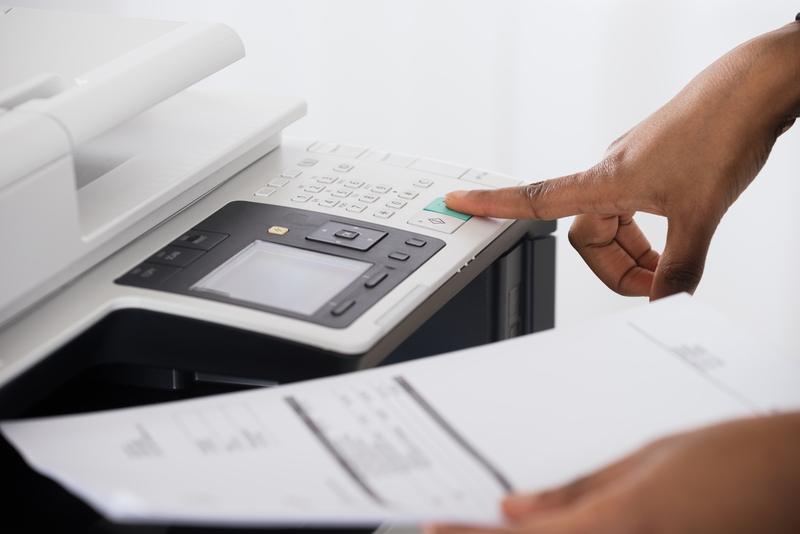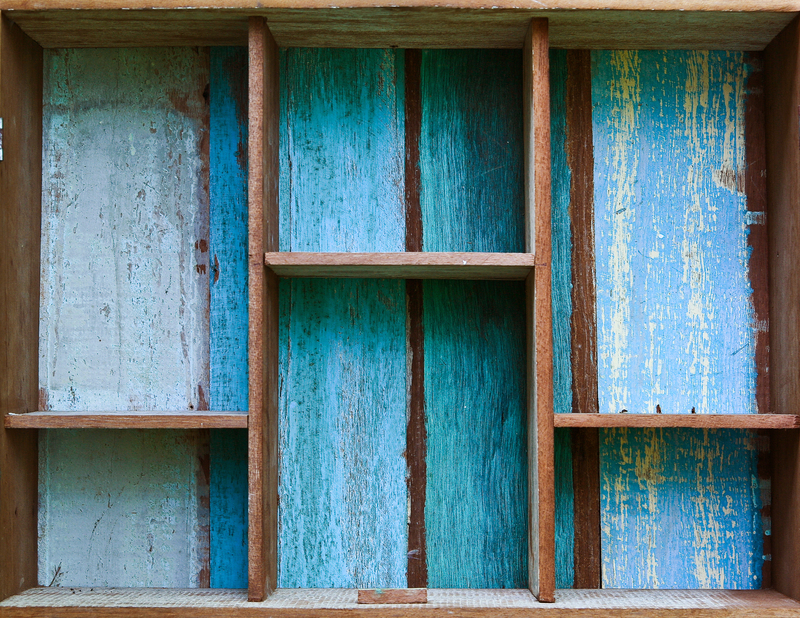Cardboard Disposal: Innovations and Sustainable Practices
Cardboard disposal has become a pressing concern in the modern era, where online shopping and global shipping have exponentially increased the use of cardboard packaging. With an ever-growing mountain of cardboard waste, the need for innovative and sustainable practices in cardboard recycling and disposal is more important than ever. This article delves deep into the world of cardboard disposal, exploring the latest innovations, best practices, and the future of sustainable cardboard management.

Understanding the Importance of Cardboard Disposal
Cardboard is one of the most widely used packaging materials around the globe. Its lightweight, durable, and recyclable characteristics make it a preferred choice for businesses and consumers alike. However, improper cardboard disposal can lead to a host of environmental issues, from the filling up of landfills to unnecessary resource depletion.
Environmental Impact of Cardboard Waste
- Landfill Overload: Inefficient cardboard disposal contributes significantly to municipal waste in landfills.
- Resource Waste: Discarding cardboard rather than recycling leads to more trees being cut down for pulp.
- Greenhouse Gas Emissions: Decomposing cardboard in landfills emits methane, a potent greenhouse gas.
- Water and Energy Use: Manufacturing virgin cardboard consumes substantial amounts of water and energy compared to recycling existing materials.
By understanding these impacts, individuals and organizations can better appreciate the need for effective and sustainable cardboard disposal solutions.
Traditional Cardboard Disposal Methods
Traditionally, cardboard disposal involved either sending waste to the landfill or simple recycling. While these methods have served society for decades, they are not always the most efficient or environmentally friendly options available today.
Landfilling vs. Recycling
- Landfilling: A significant portion of cardboard waste still ends up in landfills, where it takes years to decompose and releases methane gas.
- Recycling: Recycling cardboard reduces the need for raw materials and energy. However, contamination and improper sorting can diminish its benefits.
Even with existing curbside recycling programs, a considerable amount of cardboard still fails to reach recycling centers due to contamination or lack of awareness.
Innovative Approaches to Cardboard Disposal
As environmental concerns have grown, so too have efforts to revolutionize cardboard waste disposal. From advanced recycling techniques to the development of compostable alternatives, innovation is reshaping the way society handles cardboard.
Smart Collection and Sorting Systems
- AI-Powered Recycling: Cutting-edge facilities now employ artificial intelligence and robotics to identify and sort cardboard more efficiently, reducing contamination and increasing recycling rates.
- Smart Bins: Municipalities and businesses are deploying smart recycling bins with sensors that detect the level of cardboard and send alerts when they need to be emptied, optimizing pickup routes and minimizing overflow.
Eco-friendly Packaging Innovations
- Biodegradable Cardboard: Research and development are yielding new types of cardboard that break down rapidly in composting environments, minimizing long-term waste.
- Edible Packaging: Some companies are experimenting with edible cardboard alternatives for packaging food products, reducing overall waste streams.
On-Site Cardboard Shredding and Reuse
- Shredding for Packing Material: Businesses increasingly use shredders to repurpose waste cardboard as protective packing material, reducing the need for new resources.
- Energy Production: In some eco-parks and facilities, shredded cardboard is burned in controlled environments to produce energy, although this method is less sustainable than recycling due to emissions.
Upcycling and Creative Reuse
- DIY and Craft Projects: Upcycling cardboard into storage, furniture, and art has become popular, especially in creative and educational settings.
- Community Initiatives: Local groups and organizations collect clean cardboard for use in gardening projects (as mulch or weed barriers) or community art installations.
Sustainable Practices in Cardboard Disposal
The key to minimizing the environmental impact of cardboard lies in sustainable disposal practices. Here are some of the leading methods that both individuals and organizations can adopt to promote sustainable cardboard management.
Best Practices for Recycling Cardboard
- Flatten Boxes: Flattening cardboard boxes ensures more efficient transport and processing at recycling facilities, saving space and energy.
- Keep Cardboard Dry: Wet or soiled cardboard can contaminate loads, making it unrecyclable. Keep your cardboard clean and dry before recycling.
- Remove Packing Materials: Tape, plastic, and foam inserts should be removed prior to recycling for a purer stream.
- Participate in Local Recycling Programs: Take advantage of community recycling pickups or drop-off centers.
Composting Cardboard as an Alternative
- Brown Material: Cardboard is an excellent source of carbon (brown material) in compost piles, balancing green (nitrogen-rich) waste like food scraps.
- Chop or Shred: Break cardboard into smaller pieces to speed up decomposition.
- Compost Only Untreated Cardboard: Avoid glossy, colored, or heavily inked cardboard as these may contain chemicals harmful to compost.
Support for Closed-Loop Systems
- Buy Recycled Cardboard: Encourage the market for recycled content by purchasing products and packaging made from post-consumer cardboard.
- Encourage Producers to Take Back Packaging: Extended Producer Responsibility (EPR) programs task manufacturers with collecting and recycling materials after consumer use, closing the loop and reducing waste.
Role of Businesses in Sustainable Cardboard Waste Management
Businesses, both large and small, play a vital role in innovative cardboard disposal and recycling. With the rise of e-commerce, companies are responsible for a significant portion of cardboard waste generated worldwide.
Corporate Best Practices
- Implement Cardboard Bale Compactors: These machines compress large volumes of cardboard into bales for easier storage and transport, making recycling more feasible and cost-effective.
- Source Sustainably: Companies should prioritize packaging made from recycled, responsibly sourced, or certified materials.
- Educate Employees: Training staff on sustainable cardboard disposal and recycling ensures company-wide compliance and reduces waste.
- Innovative Packaging Methods: Forward-thinking companies employ reusable shipping containers or adopt minimal packaging solutions to reduce waste.
Partnerships and Certification Programs
- Environmental Certifications: Joining programs such as FSC (Forest Stewardship Council) or SFI (Sustainable Forestry Initiative) enhances credibility and fosters responsible sourcing.
- Community Engagement: Partnering with local recycling initiatives or offering cardboard take-back programs demonstrates corporate social responsibility.
The Circular Economy and the Future of Cardboard Disposal
The concept of a circular economy is central to achieving long-term sustainability in cardboard disposal. Instead of a linear model--where resources are used and then disposed of--a circular approach keeps materials in use for as long as possible through recycling, reuse, and regeneration.
Technological Advancements Shaping the Future
- Improved Recycling Efficiency: Enhanced pulping technology and chemical treatments yield higher-quality recycled cardboard, making it suitable for a broader range of uses.
- Blockchain Tracking: Some companies are piloting blockchain technology to track cardboard through its lifecycle, ensuring transparency and accountability in recycling processes.
- Biodegradable Innovations: Next-generation biodegradable and water-soluble cardboards aim to make disposal easy and entirely eco-friendly.
Global and Local Policy Initiatives
- Zero Waste Cities: Many municipalities worldwide are striving to become 'zero waste' by introducing comprehensive collection and recycling programs, with cardboard as a priority material.
- Deposit Return Systems: Financial incentives encourage the return of cardboard packaging to designated centers for recycling.
- Educational Outreach: Governments and NGOs are investing in campaigns to raise public awareness on the importance of proper cardboard disposal.

Tips for Cardboard Disposal at Home
For individuals, making small changes to cardboard disposal routines can have a significant positive impact. Here are practical tips to make your household cardboard waste management more sustainable:
- Refuse Unnecessary Packaging: Whenever possible, opt for products with minimal or no cardboard packaging.
- Reuse Boxes: Repurpose sturdy boxes for storage, mailing, or moving before recycling them.
- Compost Uncoated Cardboard: Tear clean, brown cardboard into small pieces for your home compost bin.
- Join Community Recycling Drives: Participate in local events that collect and process cardboard efficiently.
- Stay Informed: Check your municipality's guidelines for cardboard recycling, as rules often vary by location.
Conclusion: The Path to Responsible Cardboard Disposal
As cardboard usage continues to rise, embracing innovative and sustainable cardboard disposal practices is crucial for the health of our planet. From smart recycling technologies to everyday habits at home and in business, everyone has a role to play in reducing cardboard waste. By supporting advanced recycling systems, composting, upcycling, and policy-driven initiatives, we can collectively close the loop and create a more sustainable future.
The story of cardboard doesn't have to end in a landfill. Let's all commit to smarter, more sustainable disposal--and turn cardboard waste into valuable resources for generations to come.